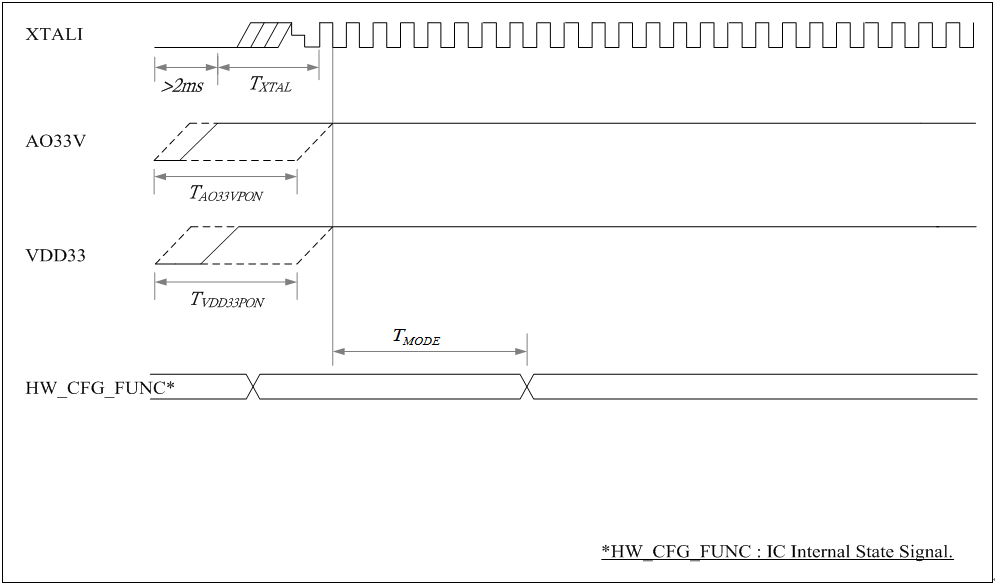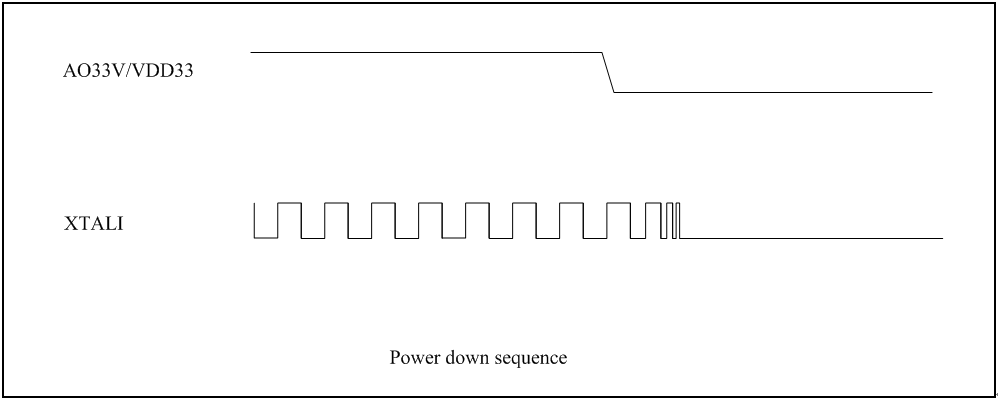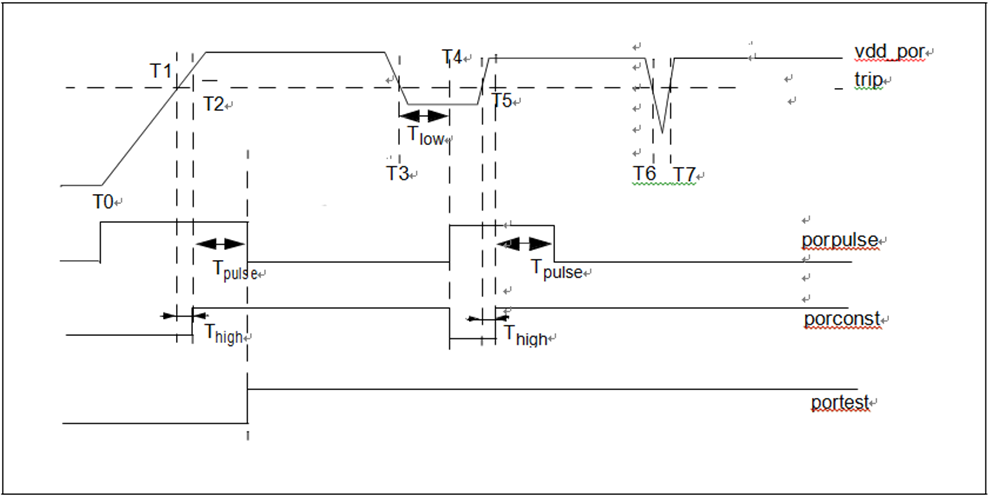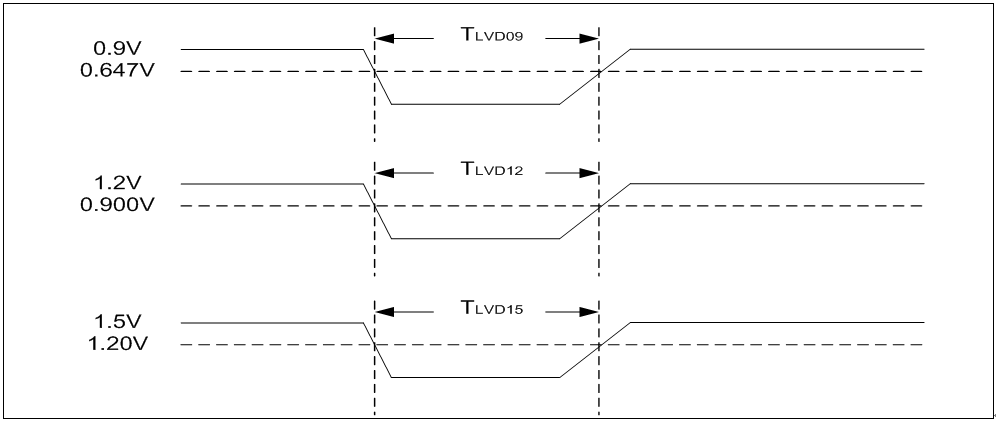
Figure 9-1 Power On Sequence
Parameter | Symbol | Min | Typ. | Max. | Units |
XTAL clock output stable time | TXTAL | 5 | - | - | us |
AO33V power on timing range | TAO33VPON | 0 | - | 5 | ms |
VDD33 power on timing range | TVDD33PON | 0 | - | 5 | ms |
Operation mode configure time after AO33V and VDD33 power ready (include internal core power ramp up time and reset circuit time cost) | TMODE | 15 | - | - | ms |

Figure 9-2 Power Down Sequence
There are 3 physically event to trigger chip reset.
1. POR (Power On Reset)
2. External Reset
3. LVD (Low Voltage Detection)
POR
The POR has 2 functions when AVDD33/DVDD12 becomes larger than the trip level. The first function is to give a reset pulse and the second function is to give a constant signal that tells whether the supply is on or off.
To have a better understanding of the functionality of the POR, see Figure 7. In this figure, a possible curve of AVDD33/DVDD12 is given with a dip at T3-T5 and a dip at T6-T7. At T0 the POR, porpulse, will start off with a '1' (= Voh). At T1 the detector passes through the triplevel, porconst becomes '1' after Thigh. A delay element will add an- other Tpulse before porpulse drops to '0'. This is done to make sure that the length of the generated detector pulse, porpulse, is large enough to reset asynchronous flip-flops. If the dip is too short (T7-T6 < Tlow) porpulse will not react and will stay low.
PORPULSE | PORCONST | |
AVDD33/DVDD12 < Vtrip | '1' | ‘0’ |
AVDD33/DVDD12 > Vtrip | '0' | '1' |

Figure 9-3 POR Timing
Parameter | Symbol | Min | Typ.[1] | Max. | Units |
trip-level | |||||
high trip-level | Vtrip_high | 0.70 | 0.80 | 0.90 | V |
low trip-level | Vtrip_low | 0.65 | 0.75 | 0.85 | V |
difference between high and low trip- level | HLtrip_diff | 50 | 70 | 100 | mV |
timing | |||||
time vdd_por has to be above Vtrip_high[3] before porconst will be ‘1’ | Thigh | 2 | µs | ||
time vdd_por has to be below Vtrip_low[4] before porconst will be ‘0’ | Tlow | 11 | µs | ||
time porpulse will be ‘1’ after vdd_por > Vtrip_high | Tpulse | 200 | ns | ||
External Reset
The external reset is ACTIVE LOW meaning that asserting external reset LOW, will cause the entire system to reset. If the external reset signal rises through VT+ and keeps HIGH time longer than TRSTH, then the internal reset signal de-asserts. If external reset signal falls through VT-, and keeps LOW time longer TRSTL, then internal reset signal asserts.

Figure 9-4 External Reset Timing
Parameter | Symbol | Min | Typ. | Max. | Units |
trip-level | |||||
Low to High Threshold Point | VT+ | 1.51 | 1.61 | 1.67 | V |
High to Low Threshold Point | VT- | 0.92 | 0.98 | 1.02 | |
timing | |||||
Reset keep High Time | TRSTH | 1 | µs | ||
Reset keep Low Time | TRSTL | 1 | µs | ||
LVD
When 1.5V/ 1.2V/ 0.9V voltage is lower than the setting reference voltage, reset signal will be assert to reset the whole chip.

Figure 9-5 Low Voltage Detect Timing
Parameter | Symbol | Min | Typ. | Max. | Units |
0.9V Low Voltage duration | TLVD09 | 8 | µs | ||
1.2V Low Voltage duration | TLVD12 | 8 | µs | ||
1.5V Low Voltage duration | TLVD15 | 16 | µs |